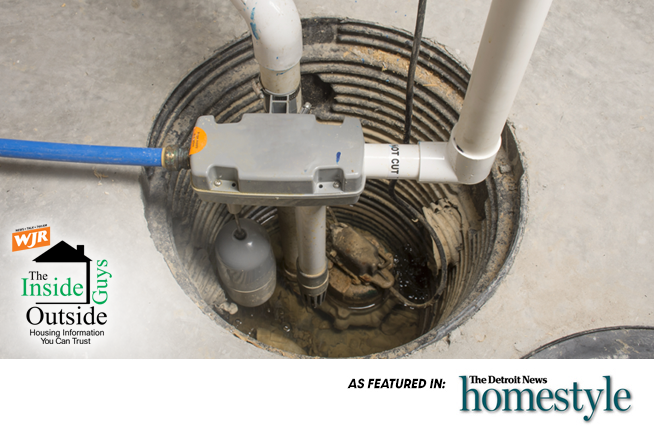
By Ken Calverley and Chuck Breidenstein
DETROIT, January 20, 2022 ~ It is colorless, odorless and tasteless. It is so “invisible,” in fact, that many claim it doesn’t even exist.
But the facts are undeniable; at least 1 in 10 lung cancer deaths, totaling 21,000 people in the United States every year, is attributed to radon exposure.
January is Radon Awareness Month, so The Guys thought it appropriate to spend some time updating everyone on the facts.
Radon is a naturally occurring element found in subsoil rock and water formations that emits radioactive “daughters,” which carry a negative charge that allows them to move through the soil and air and attach themselves to dust and other surfaces.
These particles are often transported through groundwater, and so can move over large areas to the extent that one home may show high concentrations, while a neighboring home may have nothing.
It can also be more of an issue during periods where the soils are saturated, and we are shut up in our homes.
Since radon is often carried by water, it can work its way into basement areas through sump crocks and virtually any crack in the basement floor or walls.
It is more of an issue in recent decades in residential construction because of what we have talked about so many times in recent articles: the fact we are building tighter homes and apartments.
Eleven states in the US require active radon remediation systems be installed in all new residential construction, while several counties in every state require the installation of passive remediation systems at a minimum in new construction.
The issue is so prevalent that no real estate professional will close a transaction without knowing what the radon readings are.
The EPA estimates that 7 million homes in the U.S. have high levels of radon and many are unaware of it.
Many new home builders will now automatically install the basics of a passive remediation system in their homes.
It consists of a length of schedule 30 or 40 PVC that begins in the drainage layer beneath the basement slab and extends vertically through the interior frame of the house to exhaust through the roof.
The idea is that convective heat flow from the house will create a flow from the area below the slab in the pipe where the radon is likely to accumulate and exhaust it to the outdoors.
You can also limit potential contamination by caulking all basement floor and wall cracks and installing a sealed lid on the sump crock. Sealing the basement floor can also limit contamination.
Active systems are similarly installed but use a mechanical fan to create the exhaust flow. They are often retrofitted in existing homes such that the exhaust is carried through the exterior floor frame to exit at grade outside the home and be dispersed into the air.
Keep in mind that concentrations of radon in a home may fluctuate wildly throughout the year based on the issues we described.
A home may test high when the ground is saturated in late fall or spring yet indicate negligible results during January or August.
The action level, according to the EPA, is a concentration of 4pCi/L, read as “four pico-curies per liter.” Higher numbers indicate higher concentrations. While there is debate regarding the action level of 4, there is ample evidence to support the reality that extended exposure to high concentrations is potentially deadly.
The Guys like the idea of minimally testing at the sump and diagonally across from the sump while also testing in the same relative spots in the main living area above. This can help you discover the source and indicate varying concentrations throughout the home.
There are two basic types of testing, including short term, two to 90 days, and long term, anything longer than 90 days. Tests can be acquired through local health departments, local hardwares and through National Radon Program Services at SOSRadon.org/Test-Kits.
At the completion of a test period, you will generally be directed to send the kit to a lab for verification of results.
Keep in mind if your water supply is from a private well, radon could be in your drinking water. It is suggested you periodically test any private well water for multiple potential contaminants.
Also be aware that ground conditions change, so a home that tested below the threshold 10 years ago may test above it today.
The best way to know is to test, whether you choose to do so yourself or have one of the professionals at InsideOutsideGuys.com do it for you.
For housing advice and more, listen to “The Inside Outside Guys” every Saturday and Sunday on 760 WJR, from 10 a.m. to noon or contact us at InsideOutsideGuys.com.
WJR TOP STORIES:
Thank you Detroit!
$2,064,269 raised during the SAY Detroit Radiothon … our biggest fundraising year EVER!
Thank you for helping to build better days in Detroit! See the official grand total announcement here!

